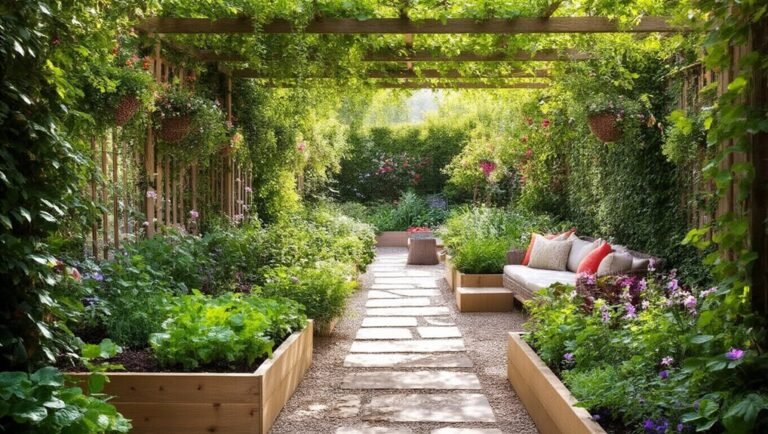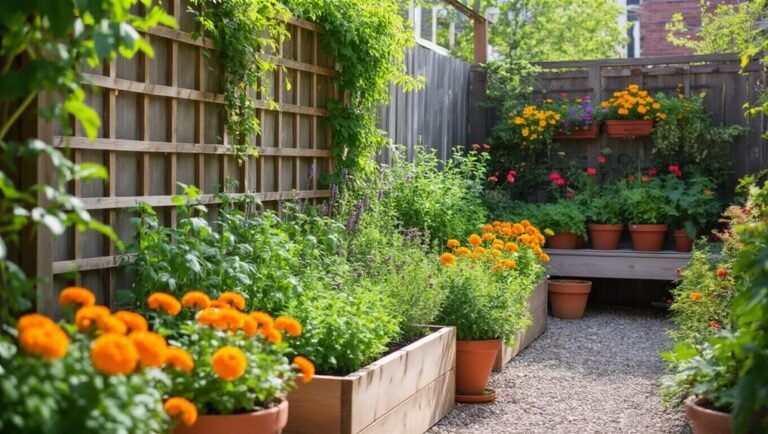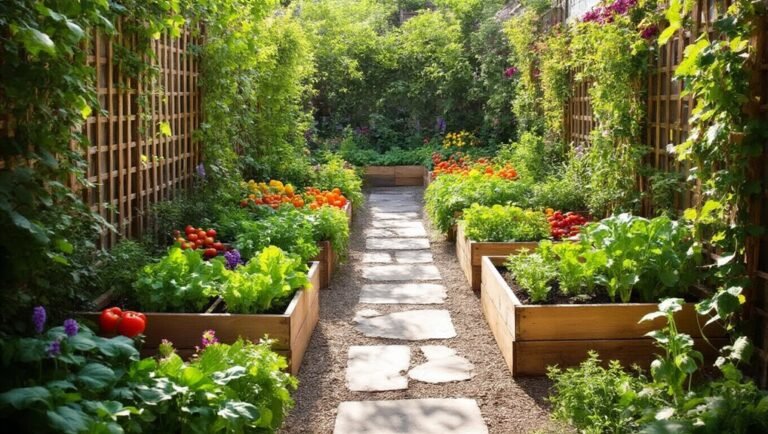If you’re starting a vegetable garden, you can’t go wrong with tomatoes, radishes, lettuce, zucchini, and green beans. Tomatoes love sunlight and need support, while radishes grow quickly and thrive in cool weather. Lettuce is easy to grow and can be harvested in just 30 days. Zucchini offers abundant yields, and green beans require minimal care. These vegetables are perfect for beginners and can lead to a successful gardening experience. Learn how to cultivate them effectively!
Key Takeaways
- Tomatoes: Easy to grow, thrive in full sunlight, and require regular watering and support for healthy harvests.
- Radishes: Quick-growing, ready in about three weeks, ideal for cool weather, and perfect for salads or snacks.
- Lettuce: Fast-growing leafy greens, harvestable in as little as 30 days, and easy to sow directly into the soil.
- Zucchini: Abundant yields, grows quickly, and thrives in various soil types with proper sunlight and watering.
- Green Beans: Minimal care required, grow quickly in warm weather, and regular picking promotes more growth for a bountiful harvest.
Tomatoes
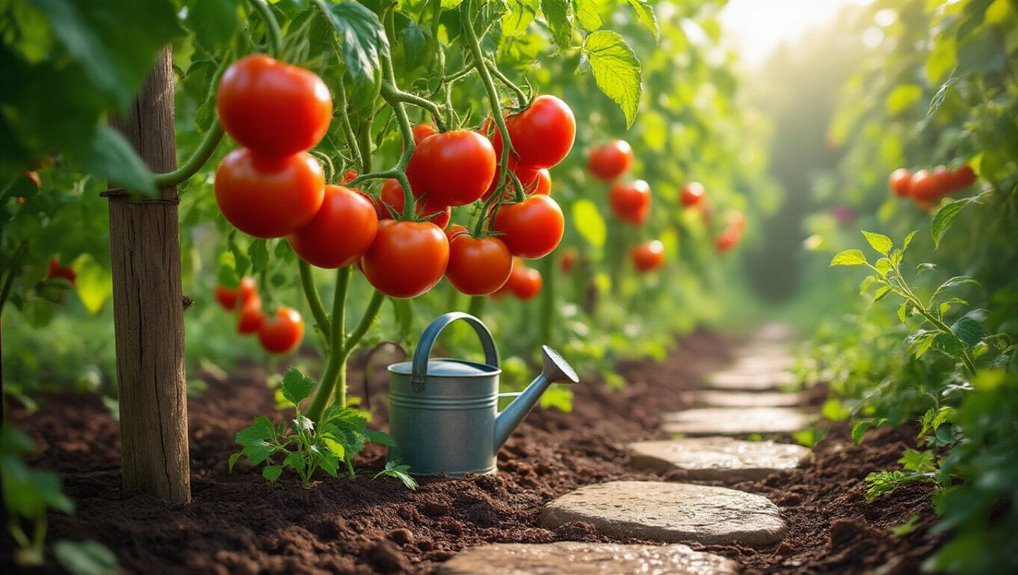
Tomatoes are often the star of any garden, and for good reason. They’re relatively easy to grow and come in various shapes and sizes. For the best planting results, it’s helpful to use a quality garden trowel to dig proper holes and set your seedlings at the right depth.
Start by choosing a sunny spot; tomatoes thrive in full sunlight. When planting, ensure you space them adequately to allow air circulation, which helps prevent diseases. Regular watering is crucial, but avoid soaking the leaves to keep them healthy.
As the plants grow, consider staking or caging them for support. For best results, use essential tomato cages to keep your plants upright and ensure a healthy harvest. You’ll want to prune any suckers to encourage better fruit production.
With a little patience, you’ll soon enjoy the satisfaction of harvesting your own fresh tomatoes. Their vibrant flavor will elevate your dishes, making all your gardening efforts worthwhile.
Happy gardening!
Radishes
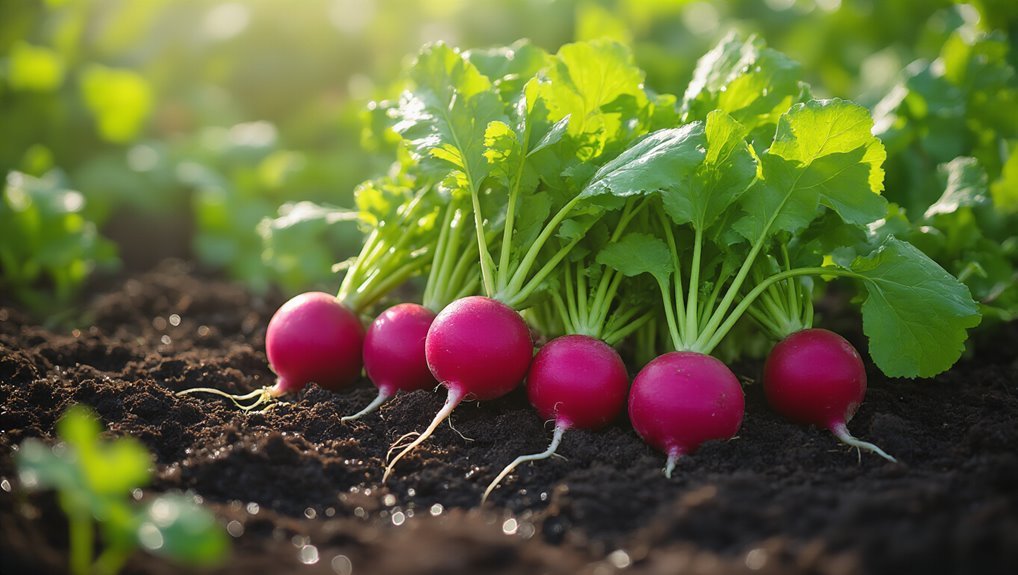
If you’re looking for a quick-growing vegetable to kickstart your garden, radishes are a perfect choice. They sprout within just a few days and can be ready to harvest in as little as three weeks.
Radishes thrive in cool weather, making them ideal for spring and fall planting. Just choose a sunny spot, loosen the soil, and sow the seeds about half an inch deep. Keep the soil moist, and you’ll see the first greens popping up in no time. For those with limited space, grow bags offer an excellent solution for cultivating radishes and other vegetables right on your patio or balcony.
Plus, radishes come in various colors and sizes, adding visual interest to your garden. Don’t forget to thin them out to give each plant room to grow. Enjoy the crisp, peppery flavor in salads or as a fresh snack! For an even easier start, many gardeners use seed starting kits designed to boost success with beginner crops like radishes.
Lettuce
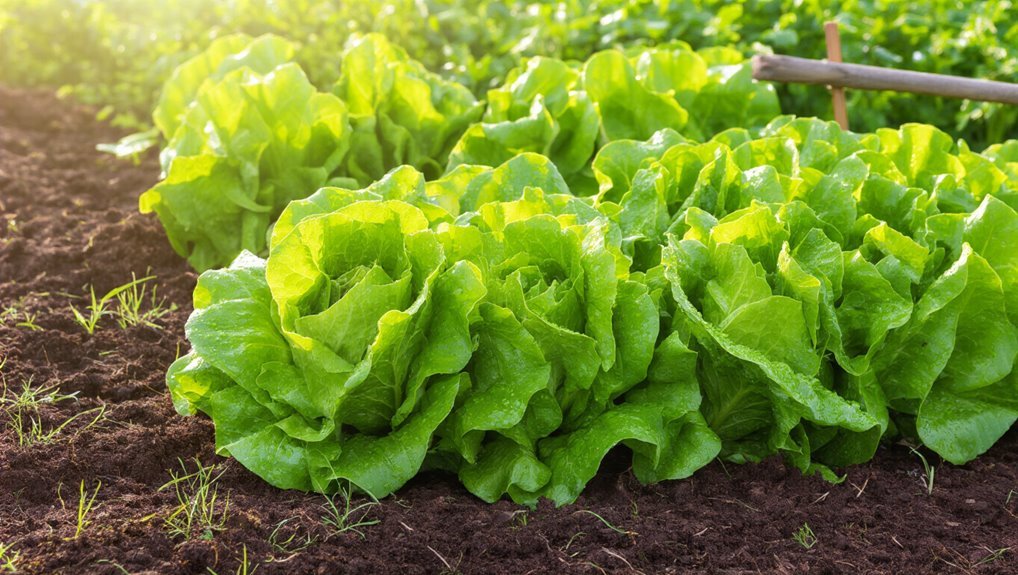
After enjoying the crisp bite of radishes, you might want to add another quick-growing option to your garden: lettuce. This leafy green thrives in cooler weather and can be harvested in as little as 30 days. You can sow seeds directly into the soil, making it an easy choice for beginners. Plus, lettuce comes in various types, from crisp romaine to tender butterhead, allowing you to mix flavors and textures in your salads. For even healthier growth, consider nourishing your lettuce with the best plant food options to ensure lush, vibrant leaves. If you want to boost your yields even further, try using plant fertilizer tablets to provide a steady supply of nutrients for your lettuce.
Here’s a quick overview of some popular lettuce varieties:
| Type | Days to Harvest |
|---|---|
| Romaine | 70 |
| Butterhead | 55 |
| Leaf | 45 |
| Iceberg | 75 |
Plant some lettuce today, and enjoy fresh salads in no time!
Zucchini
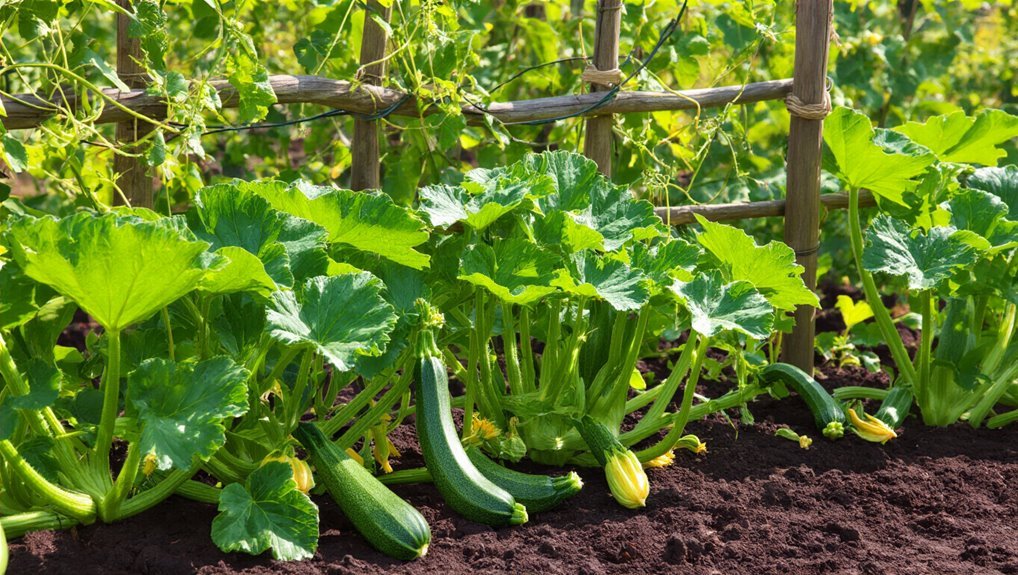
Zucchini is a fantastic choice for beginner gardeners, offering abundant yields and versatility in the kitchen. These summer squash grow quickly and can thrive in various soil types, as long as they receive plenty of sunlight and water. For best results, use organic mulching materials like straw to help retain soil moisture and suppress weeds.
Start by planting seeds directly in your garden after the last frost or transplanting seedlings. Ensure you space them about two feet apart, as they can spread quite a bit. Regular watering is crucial, especially during dry spells.
You’ll know they’re ready to harvest when they reach about 6-8 inches long. Enjoy them sautéed, grilled, or baked in dishes. Plus, zucchinis are great for freezing, so you can savor your hard work even in the off-season!
For even better zucchini growth, consider enriching your soil with nutrients from compost bins to boost plant health and yield.
Happy gardening!
Green Beans
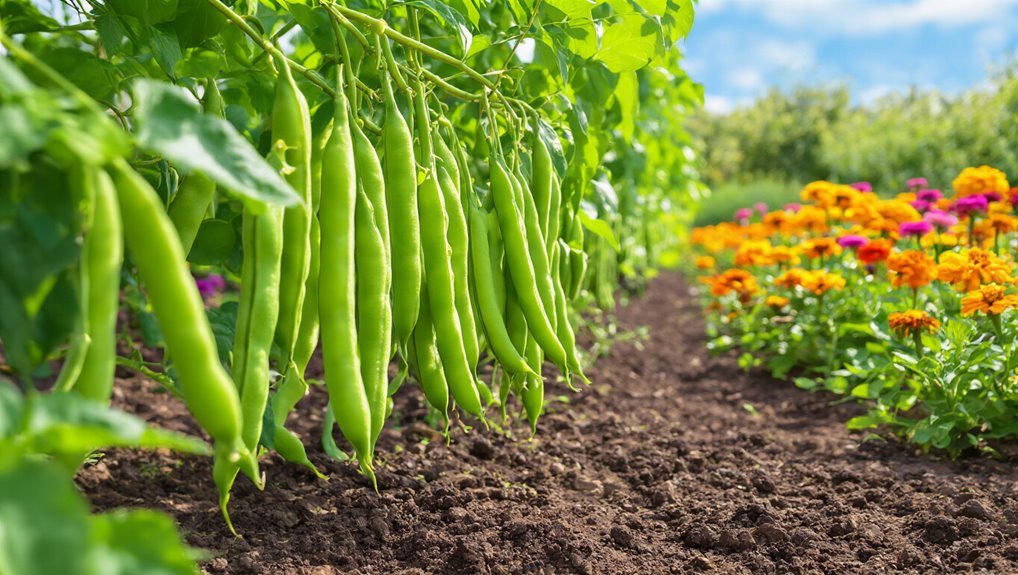
Following your success with zucchini, green beans are another excellent option for beginner gardeners. These vibrant veggies not only taste great but also grow quickly, making them a rewarding choice. They thrive in warm weather and can be sown directly into the soil after the last frost. With minimal care, you’ll enjoy a bountiful harvest in no time.
Here’s a quick reference table to help you with your green bean gardening:
| Aspect | Details | Tips |
|---|---|---|
| Planting Time | After last frost | Use well-drained soil |
| Watering Frequency | Weekly | Keep soil moist |
| Harvesting | 50-70 days after sowing | Pick regularly for more! |
Get ready to enjoy fresh green beans from your garden!
Frequently Asked Questions
What Tools Do I Need for Starting a Beginner’s Garden?
To start your beginner’s garden, you’ll need a trowel, pruners, gloves, a watering can, and a rake. These tools make planting, maintaining, and cultivating your garden easier, ensuring a successful gardening experience from the start.
How Often Should I Water My Beginner’s Garden?
Watering too little wilts your plants, but overwatering drowns them. You should check the soil moisture regularly; typically, a garden needs watering every few days, ensuring it stays damp but never soggy. Trust your instincts!
What Is the Best Soil for Vegetable Gardening?
The best soil for vegetable gardening is a well-draining mix rich in organic matter. You’ll want to combine compost, peat moss, and perlite or vermiculite to create a nutrient-packed environment for your plants to thrive.
How Can I Prevent Pests in My Vegetable Garden?
To prevent pests in your vegetable garden, regularly inspect plants, use natural repellents, and encourage beneficial insects. Crop rotation and companion planting can also help maintain a healthy ecosystem, keeping your garden thriving and pest-free.
When Is the Best Time to Plant Vegetables?
The best time to plant vegetables depends on your climate. Generally, wait until after the last frost in spring. For fall crops, plant them about 6 to 8 weeks before the first expected frost.
Conclusion
With these five foolproof vegetables, you’re on your way to a thriving garden that’ll make you feel like a gardening guru! Tomatoes, radishes, lettuce, zucchini, and green beans are not just easy to grow; they’ll transform your backyard into a vegetable paradise. Just imagine stepping outside to harvest fresh produce every day! So grab your gardening gloves, dig in, and watch your little green haven flourish. Happy gardening—you’ve got this!
